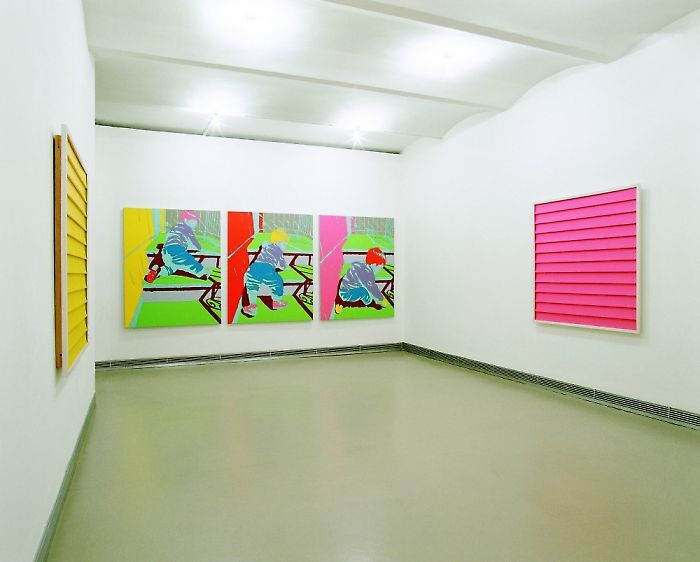—
Francis Ruyter
Lisa Ruyter, a New York based artist, chooses the subjects for her paintings from shopping centers, parties, suburban scenes and bars, all exploding in riots of color. Ruyter scouts locations for her artworks and starting her pieces with her own photographs. Then she starts mapping out her characterstically non-naturalistic, flat colors, where some of her skies for example are green or yellow, the trees red or lavender. It is the distance between the color as photographed and the color as painted, creating an interpretative space for the viewer.
By her use of color she deliberately flattens the very illusion of depth. It is possible to see the paintings as compositions in an old-master sense, if you ignore the abstract impact of the bright hippie colors. Even her technique is rooted in tradition: „The painting gets blocked out. I do an outline. The drawing is there. I make selections. It´s everything they teach in school“, the artist explains.
The newest works of Lisa Ruyter are based on photographs taken by herself in Central Park in New York. The landscape of the park has quickly identified as architecture. Already Robert Smithson applauds Frederick Law Olmsted, a landscape architect who planned Central Park, as „American´s first earthwork artist“ and Smithson mentioned „the potential similarities between landscape architecture and earth art“ in his Artforum article february 1973. Smithson also noticed that there is no position in Central Park from where you can outright grasp the park as a whole. Ruyter´s recent paintings show exactly that intimate atmosphere of the park. Moreover the paintings are from a voyeuristic point of view, where the tree branches function in a way that is not dissimilar to a window pane. Ruyter uses natural features to compose different layers in her acrylics. This element reminds of her series of paintings Stations of the Cross, 2002, 14 paintings derived from photographs of everyday life where she painted black window pane structures on colourful scenes.
Like Smithson´s sensibility, Ruyter´s sensibility derives from venturing out with her camera to wrestle with big ideas. This site-specific transformation goes to the heart of complexity, in which the experience of the ordinary is challenged, along with our preconceptions about art, as Howard Halle explained in his article Lisa Ruyter – Pop art vision, old master-technique and the power to shock and surprise.
Inquiry
Please leave your message below.

